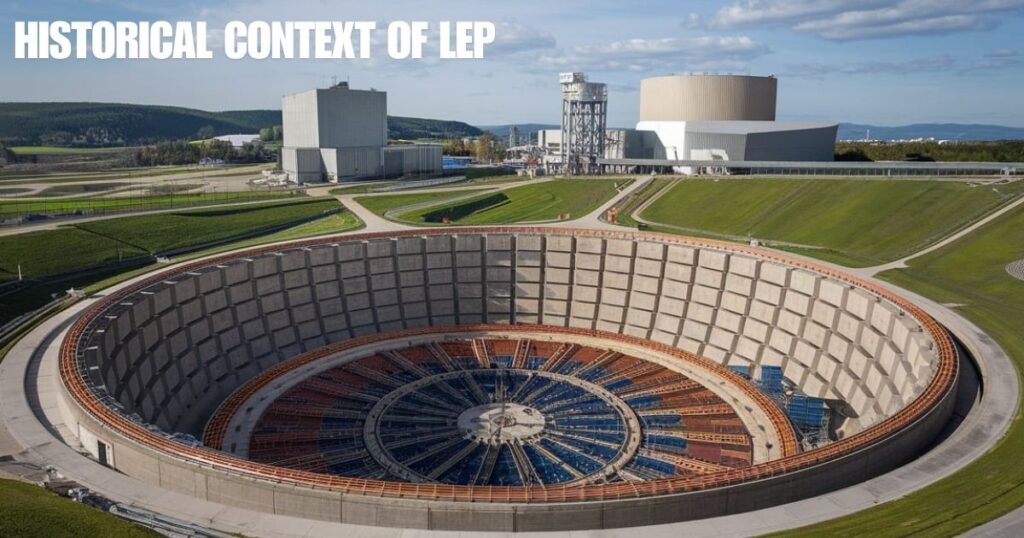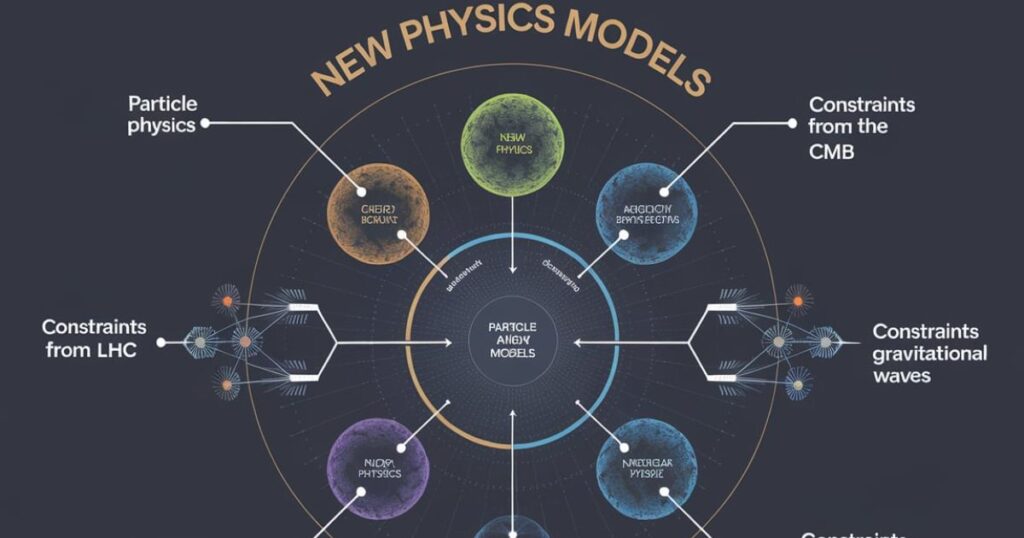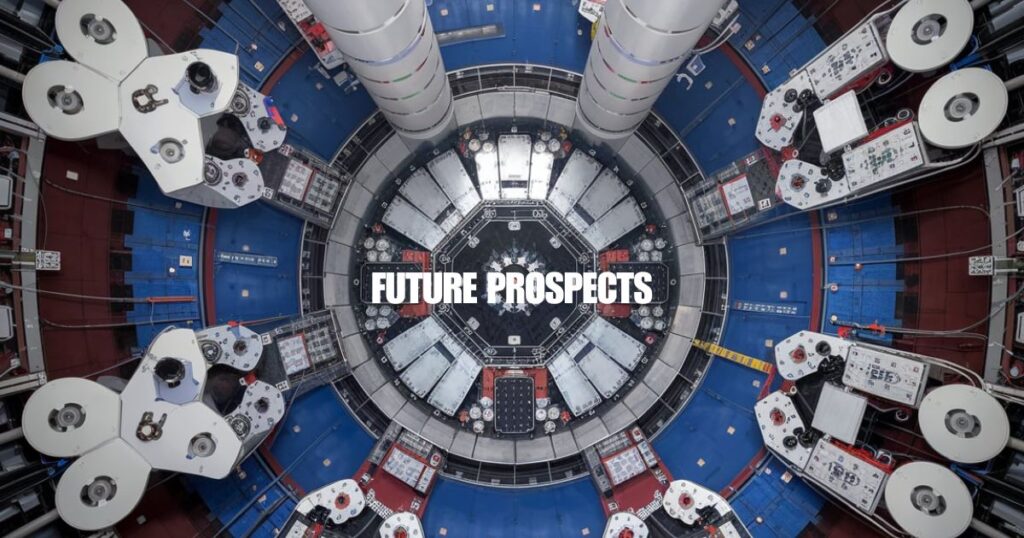In the realm of particle physics and high-energy experiments, LEPBound represents a cornerstone of modern scientific understanding.
These experimental constraints, derived from the Large Electron-Positron Collider (LEP) at CERN (European Organization for Nuclear Research), have fundamentally shaped our comprehension of the universe’s building blocks and continue to guide contemporary research in physics.
What is LEPBound?
LEPBound refers to the experimental limits on fundamental particle properties established by the Large Electron-Positron Collider, which operated at CERN from 1989 to 2000. These bounds emerged from precise measurements and analyses of particle collisions, setting crucial constraints on the properties of both known and hypothetical particles.
The collider’s ability to accelerate particles to nearly light speed created an unprecedented laboratory for testing the Standard Model of particle physics.
Through electron-positron collisions, LEP explored energy ranges from 90 to 209 GeV (Giga-electronvolt), establishing definitive limits on particle masses and interaction cross-sections. These measurements proved instrumental in validating theoretical predictions and guiding the search for new phenomena.
Historical Context of LEP

Origins of LEP
The creation of LEP marked a watershed moment in particle physics research. CERN designed this massive underground accelerator with a primary focus on studying the W boson and Z boson, fundamental particles that mediate weak nuclear forces.
The facility’s sophisticated detection systems and precise control mechanisms enabled unprecedented accuracy in particle measurements.
Key objectives during LEP’s operational period included:
- Testing Standard Model predictions with unprecedented precision
- Investigating potential physics beyond the Standard Model
- Establishing precise measurements of fundamental particle properties
- Searching for the elusive Higgs boson
Major Discoveries at LEP
LEP’s experimental program yielded numerous groundbreaking results. The facility’s detailed studies of the Z boson provided the most precise measurements of its properties to date, confirming theoretical predictions about electroweak interactions with remarkable accuracy.
The investigation of W boson properties further strengthened our understanding of fundamental forces. These experiments laid crucial groundwork for future discoveries, including setting vital constraints on the mass range for the Higgs boson, which would later be discovered at the Large Hadron Collider (LHC).
Defining LEPBound in Detail
LEPBounds encompass various experimental constraints, particularly regarding:
Mass Limits: LEP established crucial lower bounds on particle masses, especially for hypothetical particles predicted by theories beyond the Standard Model. The most famous example remains the lower mass limit of approximately 114.4 GeV for the Higgs boson.
Interaction Measurements: The facility precisely measured particle interaction rates and cross-sections, providing essential data for validating theoretical models and predictions.
Constraints on New Physics Models

LEPBound’s impact extends significantly to theories beyond the Standard Model, including:
Supersymmetry (SUSY): LEP data established crucial limits on supersymmetric partners, including sleptons and squarks, requiring their masses to exceed specific thresholds.
Grand Unified Theories (GUTs): The experimental constraints helped evaluate various unification scenarios, providing vital boundary conditions for theoretical models.
Extra-dimensional theories: LEP’s results constrained models predicting Kaluza-Klein excitations and graviton emissions, shaping our understanding of potential additional spatial dimensions.
Dark matter candidates: The collider’s data helped narrow the search parameters for potential dark matter particles, influencing modern cosmic research approaches.
Click For More Information: Isotonix Lawsuit: What You Need to Know about this controversy
Applications of LEPBound
Modern Research Applications
Contemporary particle physics continues to build upon LEPBounds in several crucial ways. These experimental constraints serve as foundational reference points for current and future research initiatives.
Future Collider Design
LEPBounds significantly influence the design parameters of next-generation particle accelerators. The International Linear Collider (ILC) and Future Circular Collider (FCC) projects incorporate these constraints in their experimental planning, aiming to explore energy regimes beyond LEP’s reach while building upon its foundational discoveries.
Theoretical Model Development
Theoretical physicists rely heavily on LEPBounds when developing new models. These constraints serve as essential checkpoints, ensuring that new theories remain consistent with established experimental data. This applies particularly to:
- Models seeking to explain dark matter phenomena
- Theories addressing the hierarchy problem
- Proposals for new fundamental symmetries
- Extensions to the Standard Model
Key LEPBounds Established by LEP

Higgs Sector Constraints
The LEP’s most renowned contribution remains its constraints on the Higgs boson. The established lower mass bound of 114.4 GeV proved crucial for the particle’s eventual discovery at 125 GeV by the LHC, demonstrating the enduring value of LEP’s experimental legacy.
Beyond Standard Model Particles
LEP experiments yielded significant constraints on various theoretical particles:
The Z’ boson: Searches established mass limits exceeding several hundred GeV for additional neutral gauge bosons.
Supersymmetric Particles: Comprehensive bounds were set on the complete spectrum of proposed supersymmetric partners.
New Scalar Particles: The experiments constrained the possible existence of additional Higgs-like particles and other scalar bosons.
Challenges and Limitations
Technical Constraints
While groundbreaking, LEP faced several technical limitations:
Energy Ceiling: The maximum achievable energy of 209 GeV restricted the exploration of higher-mass particles.
Detection Sensitivity: Certain subtle effects may have remained below the facility’s detection threshold.
Background Discrimination: Distinguishing signal from background events presented ongoing challenges.
Theoretical Considerations
The interpretation of LEPBounds often depends on theoretical frameworks, introducing potential model-dependent assumptions that require careful consideration in modern applications.
Impact on Modern Physics
LHC Program Guidance
LEPBounds significantly influenced the LHC experiments design and research priorities. The constraints established by LEP helped:
- Define optimal energy ranges for new particle searches
- Identify promising detection strategies
- Guide the development of analysis techniques
Theoretical Physics Progress
The experimental constraints continue to shape theoretical physics development by:
- Providing boundary conditions for new theories
- Suggesting promising directions for future research
- Helping eliminate unlikely theoretical scenarios
Cosmological Implications
LEPBounds have important implications for cosmological studies and our understanding of the early universe. They contribute to:
- Dark matter detection strategies
- Understanding matter-antimatter asymmetry
- Constraining early universe models
Future Prospects

Next-Generation Facilities
- Future particle physics facilities will build upon LEP’s legacy:
- The FCC promises unprecedented energy ranges and precision
- The ILC will focus on detailed studies of known particles
- New detection technologies will enable more sensitive measurements
Theoretical Developments
Modern theoretical physics continues to evolve within the framework established by LEPBounds:
- New mathematical approaches to particle physics
- Advanced computational methods for data analysis
- Innovative theoretical frameworks respecting established constraints
Complementary Research
LEPBounds complement other research approaches:
- Astrophysical observations
- Gravitational waves studies
- Underground particle detection experiments
Click For More Information: tailoring genai products for diverse mobile developer personas
Conclusion
LEPBound represents more than historical constraints; it continues to shape the frontier of particle physics research. From guiding the discovery of the Higgs boson to informing future experimental design, these bounds remain fundamental to our understanding of the universe’s basic constituents. As we push toward new frontiers in physics, LEPBound’s legacy ensures that future discoveries build upon solid experimental foundations.
FAQ’s
What makes LEPBound significant for modern physics?
LEPBound provides crucial experimental constraints that guide current research and future facility design while validating theoretical models.
How did LEPBound influence the Higgs boson discovery?
The established mass constraints helped narrow the search parameters, leading to the particle’s successful detection at the LHC.
What role do LEPBounds play in dark matter research?
They help constrain possible dark matter particle properties and guide detection strategies in current experiments.
How do LEPBounds affect future collider design?
They inform energy range requirements and detection system specifications for next-generation facilities.
Are LEPBounds still relevant to theoretical physics?
Yes, they continue to provide essential constraints for new theoretical models and guide research directions.
What is the relationship between LEPBounds and cosmology?
LEPBounds help constrain early universe models and inform our understanding of fundamental particle interactions in cosmic processes.

Hello, I’m Henry, a committed writer at supersbusiness.com, where I specialize in Business, Finance, Real Estate, and News. My articles explore a wide range of topics, providing readers with insightful and engaging content. With a knack for simplifying complex ideas, I aim to make my writing accessible and informative for all. Stay informed on the latest trends and insights by following me on supersbusiness.com.

